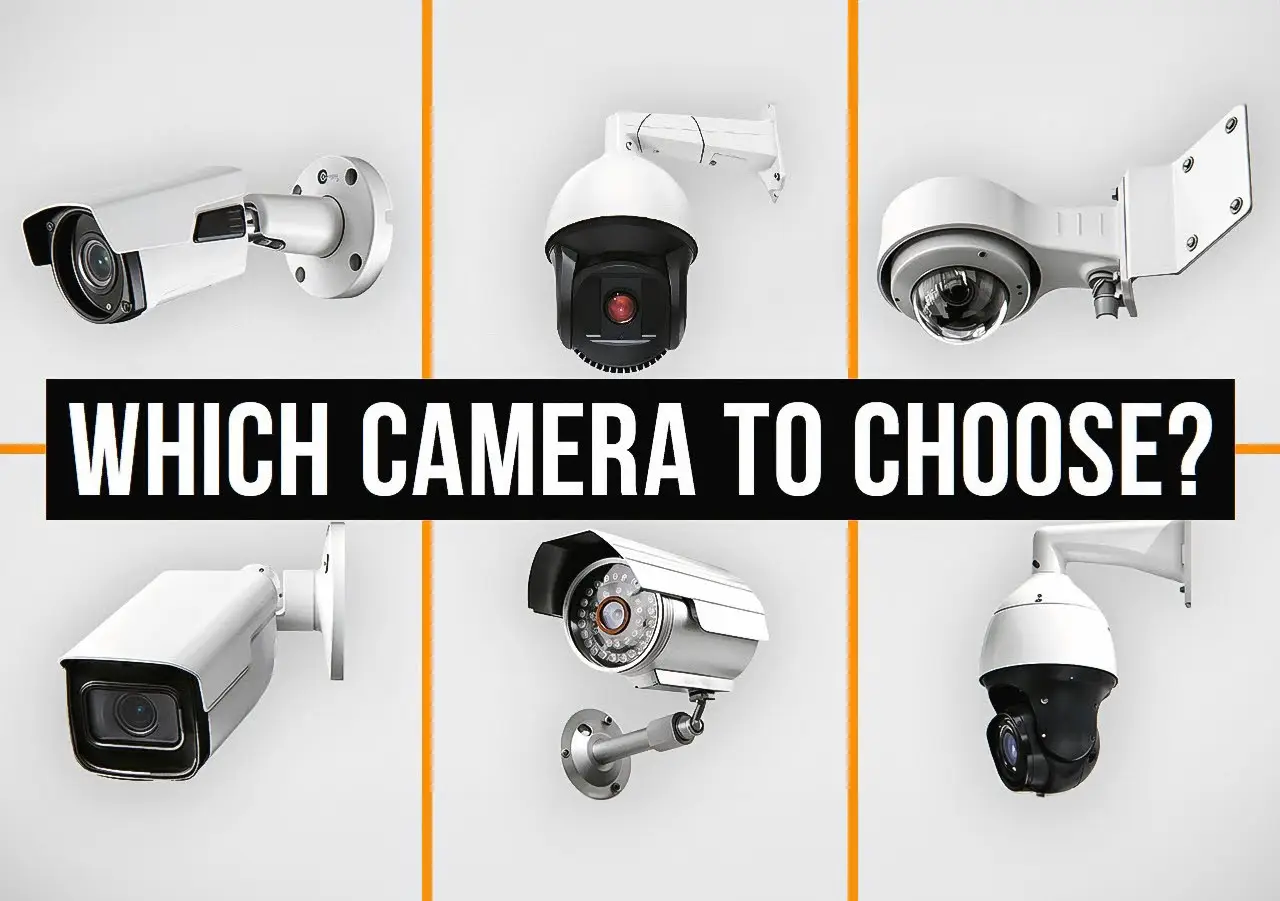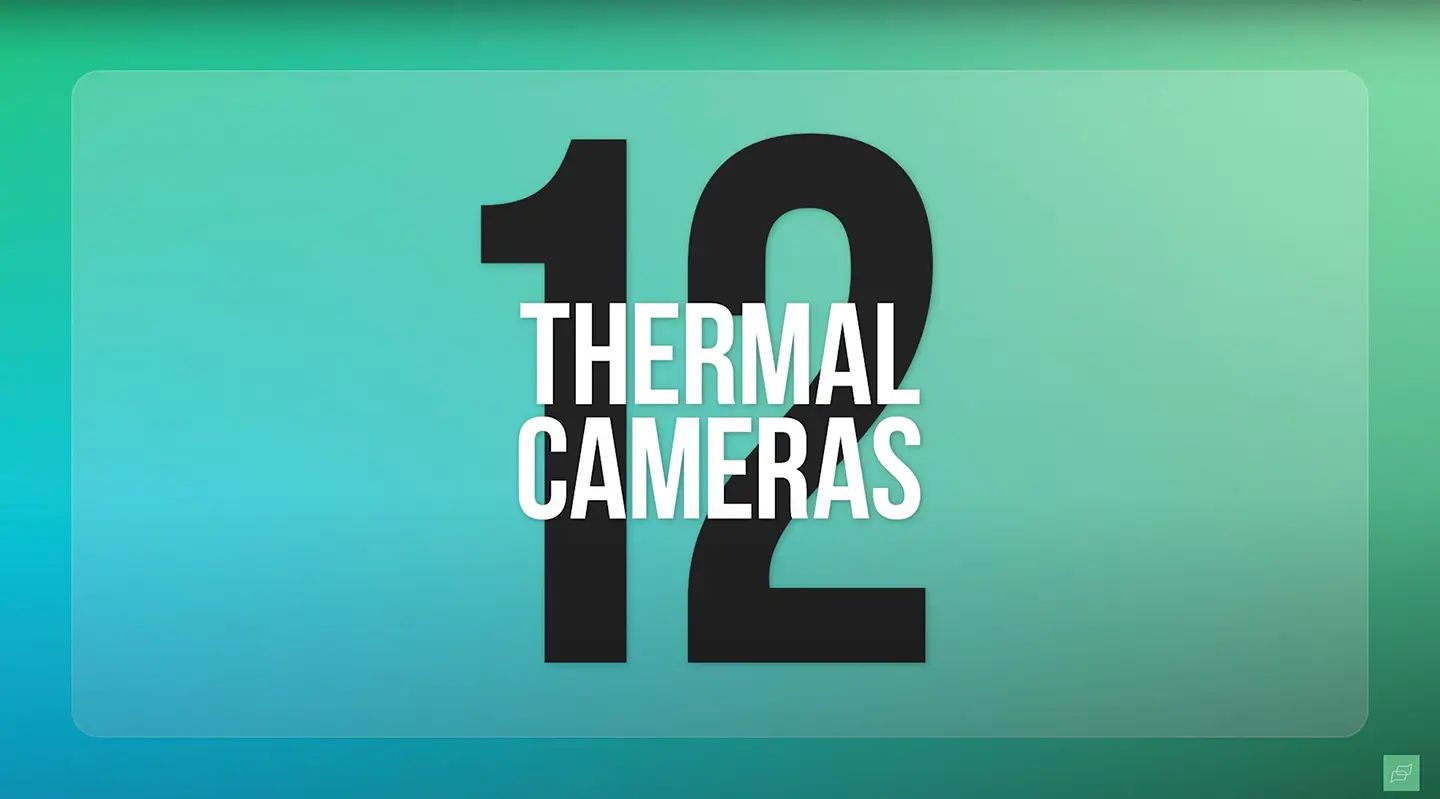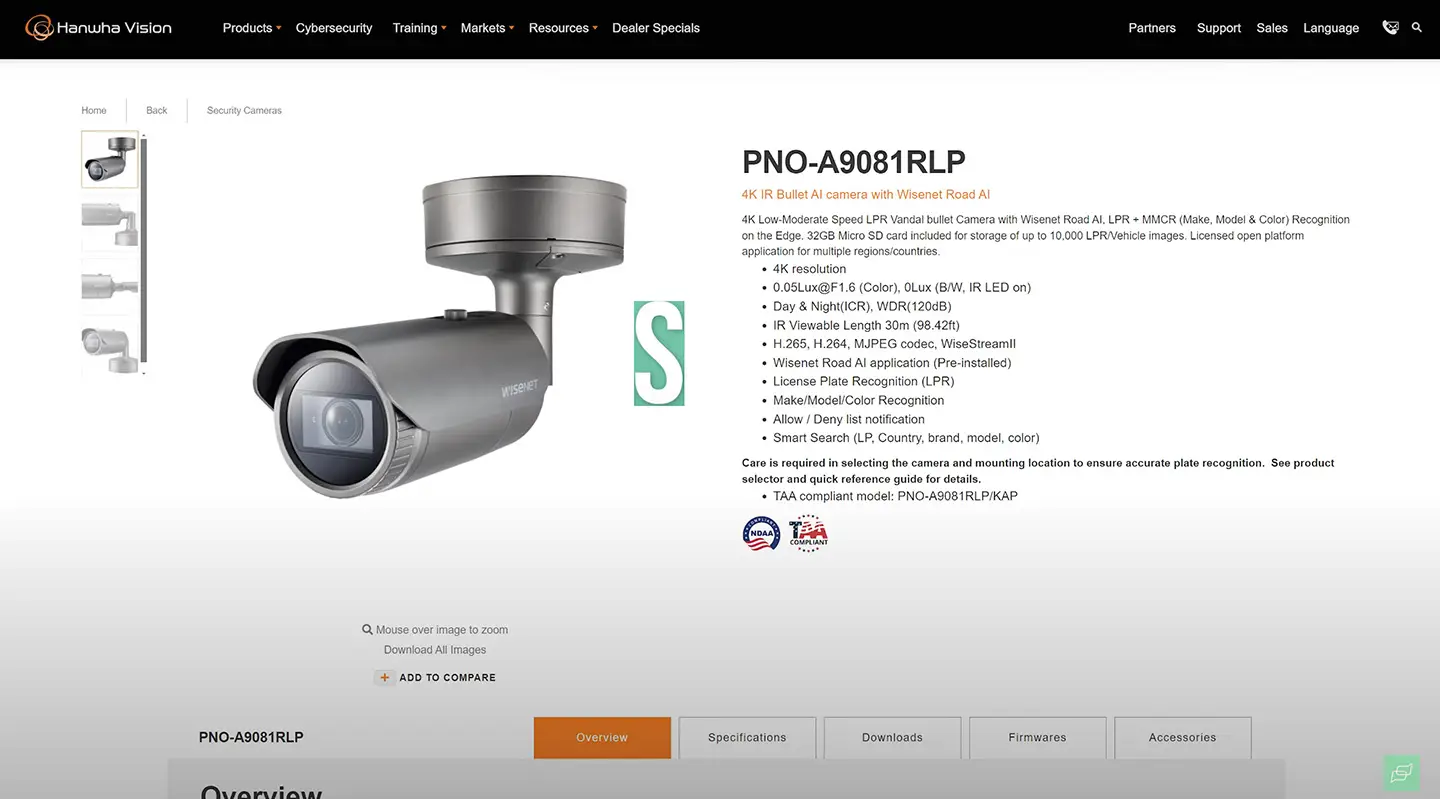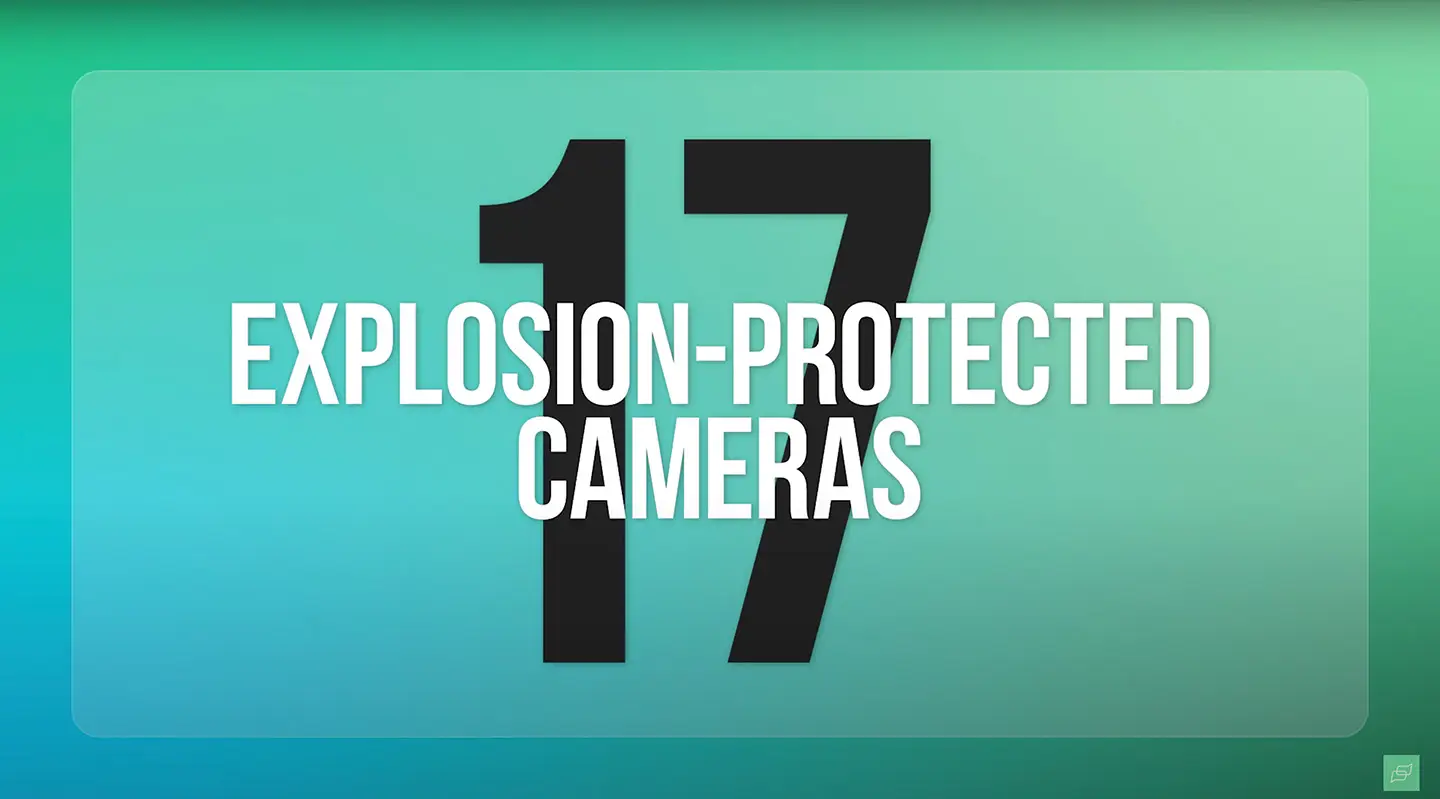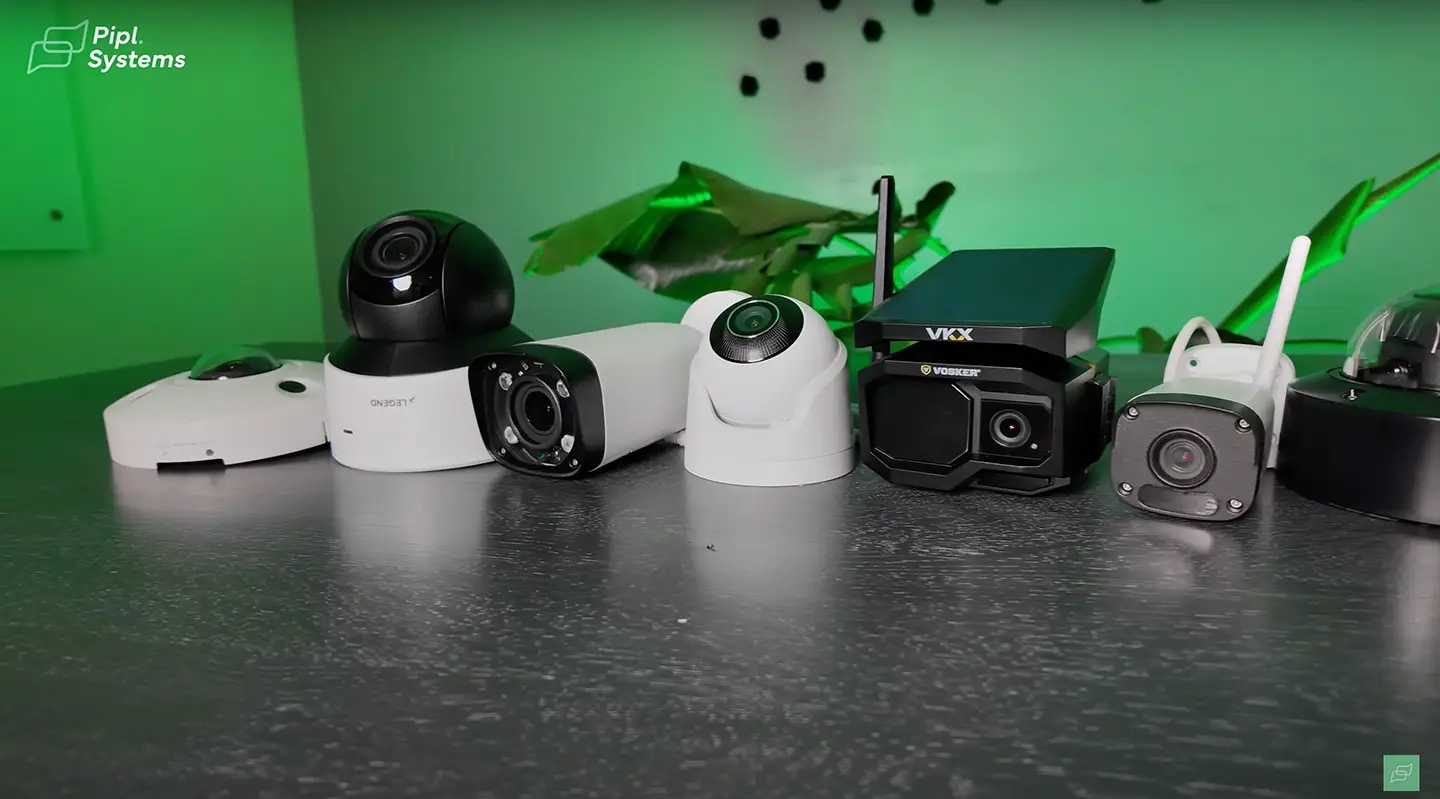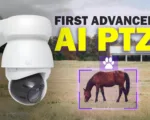Welcome to the Pipl Systems Media Portal!
As a security expert for Pipl Systems, I’m here to help you navigate the complexities of modern security systems. Today, we’re tackling a critical subject for anyone serious about securing their premises: selecting the right CCTV camera to buy in 2024.
Whether you’re a professional installer, integrator, or someone simply looking to enhance security at your home or business, understanding the strengths and limitations of various camera types is crucial. With the continuous advancements in technology, making an informed decision can be challenging. That’s why I’m here to provide a comprehensive, expert breakdown of the key types of CCTV cameras available on the market today.
Which Type of CCTV Camera to Buy in 2024? (FULL GUIDE)
In this article, we will look at the wide range of CCTV cameras that are available on the market today. There are many types of devices, and each has its own advantages and disadvantages. Understanding these features is the key to choosing the right CCTV system for your home or business.
We have collected 17 different types of cameras, and we will cover each of them in detail: from standard models to modern intelligent systems. You will learn how to choose the right camera depending on your needs, as well as what to look for when buying.
Don’t miss the opportunity to learn how to understand the world of CCTV so you can make the right choice and ensure the safety of your property. In this guide, we’ll break down the characteristics of the most popular CCTV cameras to help you make an informed decision.
Bullet Cameras
Bullet cameras are among the most recognizable types of CCTV cameras, known for their long, cylindrical shape. These cameras are ideal for outdoor use due to their weather-resistant housing. Their design typically allows for clear, long-distance viewing, making them perfect for monitoring large areas such as parking lots or the perimeter of a property.
Key Advantages:
- Durability: Built to withstand harsh weather conditions.
- Image Quality: Often equipped with high-resolution lenses for detailed footage.
- Ease of Installation: Simple mounting process, usually requiring minimal tools.
Considerations:
- Visibility: Their noticeable design might not be suitable for environments where discretion is desired.
- Fixed Viewing Angle: While some models offer varifocal lenses, bullet cameras generally have a fixed viewing angle.
Example: The Legend Bullet Camera is a prime example, offering high resolution and a durable build, making it a favorite for many security professionals.
Dome Cameras
Dome cameras get their name from their dome-shaped housing, which provides a sleek and unobtrusive appearance. These cameras are versatile and can be used both indoors and outdoors, though they are particularly popular in indoor environments like retail stores and residential buildings.
Key Advantages:
- Discreet Design: Their unobtrusive appearance makes them less likely to be tampered with.
- Wide Viewing Angle: Ideal for monitoring large areas with a single camera.
- Vandal Resistance: The dome design offers protection against tampering and vandalism.
Considerations:
- Installation Complexity: Their design may require professional installation to ensure proper setup.
- Cost: Dome cameras can be more expensive due to their advanced features.
Example: The I-PRO Dome Camera provides full HD video and blends seamlessly into various environments, offering both aesthetic appeal and security.
Turret Cameras
Turret cameras, also known as eyeball cameras or mini dome cameras, share similarities with dome cameras but offer a more compact and flexible design. Their ball-and-socket construction allows for easy camera positioning, making them a versatile option for different surveillance needs.
Key Advantages:
- Flexibility: Easy to adjust, allowing for precise camera positioning.
- Low-Light Performance: Known for their exceptional performance in low-light conditions.
- Minimal Glare: Designed to reduce issues with glare and reflections.
Considerations:
- Discretion: While compact, they might be less discreet compared to traditional dome cameras.
- Exposure: If not properly weatherproofed, they may be vulnerable to environmental factors.
Example: The Uniview 4 Megapixel Wise-ISP ColorHunter is a standout turret camera, offering impressive low-light performance and flexibility in camera placement.
PTZ Cameras
PTZ stands for Pan-Tilt-Zoom, describing the camera’s ability to move horizontally (pan), vertically (tilt), and zoom in on objects. These cameras are often used in large areas requiring extensive coverage, such as shopping malls or airports.
Key Advantages:
- Remote Control: Allows for real-time adjustment of the camera’s viewing direction and zoom.
- Versatile Coverage: Ideal for monitoring large spaces with a single camera.
- High Resolution: Often equipped with advanced optics for detailed zoom capabilities.

Considerations:
- Cost: PTZ cameras are generally more expensive due to their advanced features.
- Maintenance: Moving parts may require more frequent maintenance and can wear out over time.
Example: The Legend PTZ Camera provides excellent control and image quality, making it a preferred choice for high-security environments.
Box Cameras
Box cameras are traditional CCTV cameras characterized by their rectangular shape. They are highly customizable, with the ability to fit different lenses based on the surveillance needs. Box cameras are typically used in environments where the camera needs to be visible as a deterrent or when high-quality footage is required.
Key Advantages:
- Customizability: Compatible with various lenses, allowing for tailored surveillance solutions.
- Visibility: Their presence acts as a deterrent to potential intruders.
Considerations:
- Bulkiness: Their large size may not be suitable for discreet surveillance.
- Older Technology: While still effective, box cameras are considered older technology compared to more modern camera designs.
Example: The Axis P1378 Network Camera, with its 4K resolution, is ideal for monitoring wide-open areas that require detailed surveillance, such as airports and public transport systems.
Mini Cameras
Mini cameras, as the name suggests, are compact and designed for covert surveillance. These cameras are typically used in situations where discretion is key, such as in retail stores, offices, or other environments where you want to monitor without drawing attention.
Key Advantages:
- Size: Extremely compact, making them ideal for covert operations.
- Discreet Monitoring: Perfect for environments where visible surveillance might be a concern.

Considerations:
- Limited Features: Due to their small size, mini cameras may not offer the advanced features found in larger models.
- Lower Resolution: Some mini cameras may have lower resolution compared to full-sized CCTV cameras.
Example: The Axis P1265 Network Camera
Choosing the right CCTV camera is crucial to ensuring the security of your property, whether it’s for personal or business use. Each camera type has its own unique benefits and potential drawbacks, and understanding these can help you make the best decision for your specific needs.
Wi-Fi Cameras
Wi-Fi cameras have become a popular choice for those seeking easy installation without the need for extensive wiring. These wireless cameras connect to your network, offering flexibility in placement and simplicity in setup. They are particularly useful in homes or small businesses where running cables might be impractical.
Key Advantages:
- Ease of Installation: No need for cumbersome cables; these cameras connect wirelessly to your network.
- Flexible Placement: Can be positioned in various locations, both indoors and outdoors, without worrying about power or network cables.
Considerations:
- Connectivity Issues: Wi-Fi signals can be prone to interference, which may affect video quality and reliability.
- Security Concerns: If not properly secured, Wi-Fi cameras can be vulnerable to hacking attempts.
Example: The Uniview Wi-Fi Camera is an excellent choice, offering a seamless wireless connection with an NVR for a straightforward and efficient surveillance setup.
Battery-Powered Cameras
Battery-powered cameras are ideal for locations without access to power outlets, offering flexibility and ease of use in remote or temporary setups. These cameras operate independently, making them perfect for outdoor installations, such as monitoring a construction site or a vacation home.
Key Advantages:
- Portability: Can be installed virtually anywhere, with no need for a constant power supply.
- Ease of Use: Ideal for remote or temporary locations where running power cables would be impractical.
Considerations:
- Battery Life: Requires regular monitoring and replacement or recharging of batteries to ensure continuous operation.
- Limited Features: May not offer the same advanced capabilities as wired cameras due to power constraints.
Example: The Vosker VKX Camera stands out with its long battery life, supported by an optional solar panel, making it a robust solution for various outdoor environments.
Solar-Powered Cameras
Solar-powered cameras represent an environmentally friendly solution, harnessing sunlight to power the device. These cameras are particularly useful in remote areas where traditional power sources are unavailable or unreliable.
Key Advantages:
- Sustainability: Utilizes renewable energy, reducing the need for battery replacements and lowering maintenance costs.
- Remote Operation: Ideal for locations far from power grids, ensuring continuous surveillance with minimal intervention.
Considerations:
- Sunlight Dependency: Requires professional installation to ensure adequate exposure to sunlight, which is crucial for consistent performance.
- Higher Initial Costs: While long-term savings are possible, the upfront cost for solar-powered systems can be higher.
Example: The Vosker V300 Ultimate is a well-designed solar-powered camera with strong performance and sustainability, offering a seamless solution for off-grid security needs.
Cameras with Internal NVR
Cameras with built-in Network Video Recorders (NVRs) are a compact and efficient option, combining the camera and recording system into a single unit. This integration simplifies the setup process and reduces the need for additional hardware.
Key Advantages:
- Simplified Setup: Combines camera and storage in one device, reducing the complexity of installation.
- Space Efficiency: Ideal for smaller setups where space is limited and minimizing equipment is a priority.
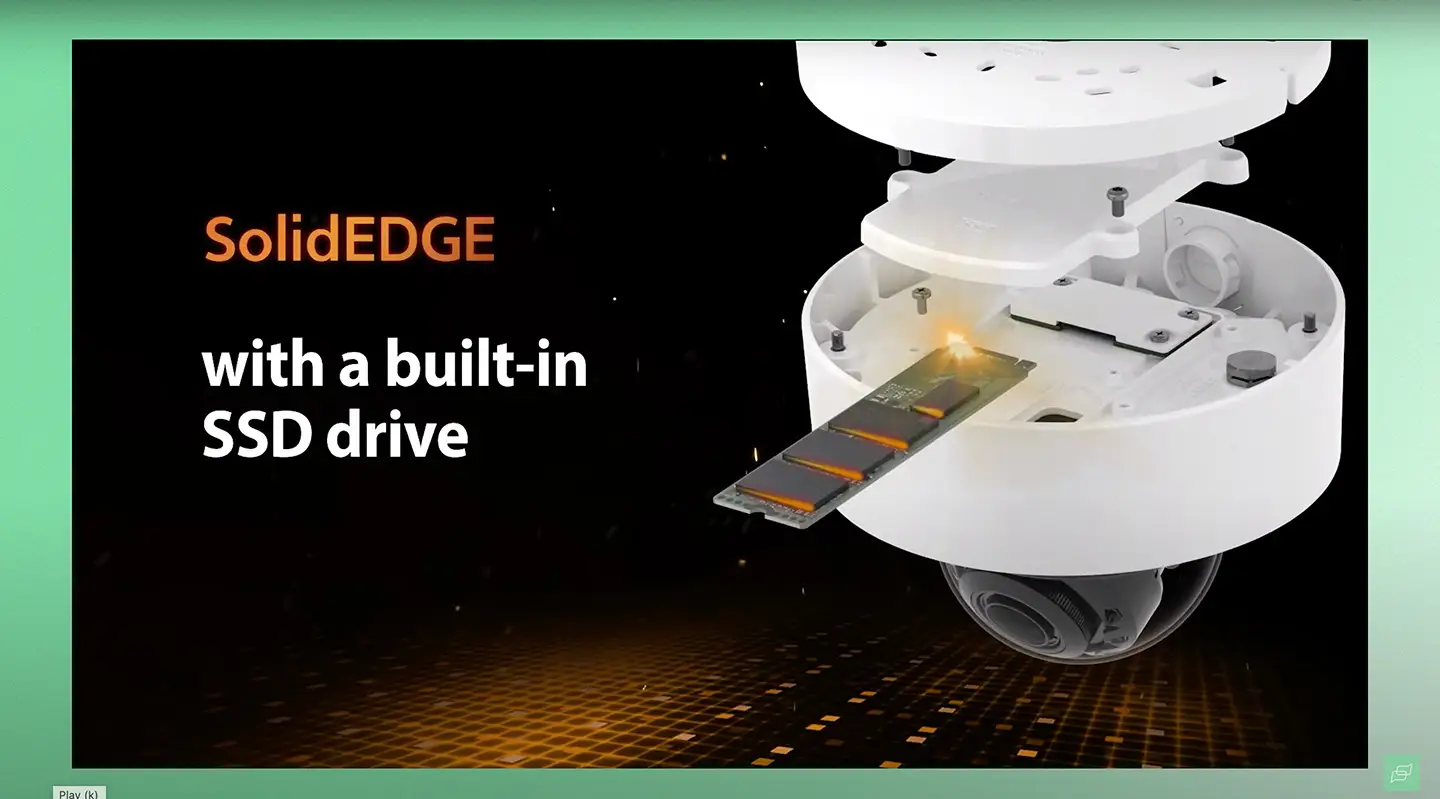
Considerations:
- Storage Limitations: Internal storage capacity may be limited compared to external NVRs, potentially requiring frequent data management.
- Risk of Data Loss: If the internal hard drive fails, stored footage could be lost unless backed up to the cloud or another external device.
Example: The Hanwha SolidEDGE Camera offers built-in storage and an integrated VMS, making it a powerful all-in-one solution for smaller surveillance systems.
Fisheye Cameras
Fisheye cameras are designed to provide a 360° panoramic view, making them ideal for monitoring large spaces with minimal blind spots. Their wide-angle lenses capture everything in the room, which can be particularly useful in areas like lobbies or retail stores.
Key Advantages:
- Comprehensive Coverage: One camera can cover an entire room, reducing the need for multiple cameras.
- Cost Efficiency: By covering a large area, these cameras can lower overall surveillance costs.

Considerations:
- Image Distortion: The wide-angle lens can introduce distortion at the edges of the image, which may require correction via software.
- Limited Detail: While they provide a broad view, the resolution may not be as high in zoomed-in areas compared to standard cameras.
Example: The Legend 5MP Fisheye Camera offers extensive coverage with features that allow for effective monitoring of large areas, making it a top choice for businesses looking to maximize surveillance efficiency.
Thermal Cameras
Thermal cameras detect heat rather than visible light, making them invaluable for environments where visibility is compromised, such as in complete darkness, smoke, or fog. These cameras are commonly used in high-security areas or for industrial monitoring.
Key Advantages:
- Enhanced Detection: Capable of detecting heat signatures, making them effective even in low-visibility conditions.
- Specialized Applications: Useful in various industries, including firefighting, law enforcement, and industrial safety.

Considerations:
- Higher Cost: These specialized cameras are often more expensive than standard CCTV cameras.
- Lower Image Detail: Thermal images typically provide less detail compared to visible light cameras, focusing instead on heat variations.
Example: The Hanwha QVGA Radiometric AI Thermal Camera is a cutting-edge device that leverages AI for precise object detection, even in extreme conditions, making it ideal for industrial and high-security applications.
Choosing the right CCTV camera for your specific needs can significantly enhance your security setup, whether you’re safeguarding a home, business, or industrial site. To stay updated on the latest trends and innovations in the security industry, subscribe to Pipl Systems’ email newsletter. Keep yourself informed and ensure your security solutions are always ahead of the curve.
License Plate Recognition Cameras
License Plate Recognition (LPR) cameras are designed specifically for capturing and analyzing license plates, making them ideal for applications involving vehicle tracking and automated access control. These cameras are highly specialized, requiring precise positioning to ensure optimal performance.
Key Advantages:
- Vehicle Tracking: Automatically reads and records license plates, making it invaluable for traffic management and parking facilities.
- Automation: Streamlines access control processes by integrating with gates and barriers for automated entry based on license plate recognition.

Considerations:
- Precision Required: To achieve the best results, these cameras must be installed with great care to ensure that plates are captured clearly and accurately.
- Higher Cost: Due to their specialized nature, LPR cameras tend to be more expensive than standard surveillance cameras.
Example: The Hanwha 4K Infrared Bullet AI Camera with Wisenet Road AI is a prime example of a high-performance LPR camera, offering intelligent analytics, smart image control, and a motorized lens for precise monitoring.
Smart AI Cameras
Smart AI cameras represent the forefront of surveillance technology, equipped with artificial intelligence to enhance their functionality. These cameras go beyond basic recording, offering features such as facial recognition, person detection, and even package tracking. This smart technology significantly improves accuracy and reduces the likelihood of false alarms.
Key Advantages:
- Advanced Analytics: AI enables selective recording and event detection, ensuring only relevant footage is captured.
- Reduced Infrastructure Load: On-camera processing minimizes the strain on your network and storage, making it a more efficient solution.
Considerations:
- Privacy Concerns: As with all AI-driven devices, there are privacy implications to consider, especially when using facial recognition technology.
- Complexity: While powerful, these cameras may require more sophisticated setup and management compared to traditional models.
Example: The Ajax AI Cameras are renowned for their advanced AI capabilities, distinguishing between different objects and reducing false alarms. These cameras perform all processing on the device itself, making them efficient and effective for modern security needs.
Multi-Lens Cameras
Multi-lens cameras, as the name suggests, feature multiple lenses within a single unit, allowing them to capture various perspectives simultaneously. Originally developed for military use, these cameras have since become available for commercial applications, offering comprehensive coverage with minimal infrastructure.
Key Advantages:
- Extensive Coverage: A single multi-lens camera can cover large areas that would typically require several traditional cameras.
- Infrastructure Savings: Fewer cameras mean less cabling and fewer network connections, which can reduce installation and maintenance costs.
Considerations:
- Initial Investment: These cameras may have a higher upfront cost due to their advanced technology and multi-lens setup.
- Complex Configuration: Configuring and managing multiple lenses may require more expertise compared to single-lens cameras.
Example: Hanwha Vision’s multi-lens cameras are an excellent choice for those needing extensive area coverage with fewer cameras. These models are well-suited for large-scale surveillance applications, such as campuses or industrial sites.
Body-Worn Cameras
Body-worn cameras are portable recording devices attached to a person’s clothing, providing a first-person perspective of events as they unfold. These cameras are widely used in law enforcement, security, and various other industries that require reliable and detailed on-the-go recording.
Key Advantages:
- First-Person Perspective: Captures events from the wearer’s point of view, providing invaluable evidence in various scenarios.
- Durability: Designed to withstand harsh conditions, these cameras are typically water-resistant, dustproof, and shockproof.
Considerations:
- Limited Battery Life: Due to their portable nature, battery life can be a concern, particularly for extended operations.
- Privacy Issues: Continuous recording can raise privacy concerns, especially in public or sensitive environments.
Example: The Percept Body Camera from IONODES is a cutting-edge, IoT-connected wearable device, featuring 4G LTE, Wi-Fi connectivity, and 4K resolution. It’s ideal for real-time body-worn monitoring and recording in demanding environments.
Explosion-Protected Cameras
Explosion-protected cameras are engineered to operate safely in hazardous environments where flammable gases, dust, or chemicals are present. These cameras are encased in robust, sealed housings that prevent the ignition of surrounding atmospheres, making them essential for industries such as oil and gas.
Key Advantages:
- Safety Compliance: Specifically designed to meet stringent safety standards in hazardous environments, ensuring reliable operation.
- Durability: Built to withstand extreme conditions, these cameras offer high-definition video in environments where standard cameras would fail.
Considerations:
- Specialized Use: These cameras are not suitable for all environments and are specifically intended for high-risk areas.
- Higher Cost: Due to their specialized nature and robust construction, explosion-protected cameras tend to be more expensive.
Example: The Axis XFQ1656 Explosion-Protected Camera is certified for use in the most hazardous areas, featuring smoke alert analytics and deep learning-based functions such as hard hat detection, making it an indispensable tool for industrial safety.
Conclusion: Making the Right Choice for 2024
As we navigate through 2024, the security landscape is rapidly evolving with cutting-edge technology, giving rise to a diverse array of CCTV cameras tailored to meet specific needs. Whether you are a professional installer, integrator, or someone keen on enhancing security, understanding the nuances of each type of camera is crucial in making an informed decision.
In this comprehensive guide, we’ve explored a variety of CCTV camera types, each offering unique features and benefits:
- Box Cameras offer customizable surveillance options but come with bulkiness and are considered somewhat dated.
- Dome Cameras combine aesthetic appeal with robust features, making them a favorite for discreet indoor surveillance.
- Bullet Cameras stand out for their deterrence factor and durability, especially in outdoor settings, though they may lack the subtlety of other designs.
- PTZ Cameras provide unparalleled control with their ability to pan, tilt, and zoom, but they require more sophisticated installation and management.
- Fisheye Cameras give you a 360-degree view, ideal for broad coverage with fewer devices, although they may suffer from image distortion.
- Thermal Cameras are indispensable in conditions where visibility is compromised, detecting heat signatures, but they do come at a higher cost.
- License Plate Recognition Cameras specialize in tracking vehicles and automating access control, though their effectiveness hinges on precise positioning.
- Smart AI Cameras revolutionize surveillance with artificial intelligence, offering features like facial recognition and reducing false alarms, but they also raise privacy considerations.
- Multi-Lens Cameras cover extensive areas with a single unit, offering great efficiency but requiring complex configurations.
- Body-Worn Cameras provide a first-person perspective, essential for law enforcement and security personnel, though their portability can limit battery life.
- Explosion-Protected Cameras are designed for hazardous environments, ensuring safety and reliability in extreme conditions, albeit with a higher price tag.
Each type of camera is engineered to fulfill specific roles, from the visibility and deterrence provided by Box and Bullet Cameras to the expansive coverage offered by Multi-Lens Cameras, and the specialized applications of License Plate Recognition and Explosion-Protected Cameras. Understanding these differences not only allows you to choose the most suitable camera for your environment but also ensures that your investment in security technology will yield the highest returns.
As we move forward, the role of AI in surveillance is becoming more pronounced, offering smarter and more efficient ways to manage security. Smart AI Cameras, for example, are not just passive recording devices; they actively analyze and process data, enabling features like facial recognition, object detection, and intelligent event recording. This advancement reduces the likelihood of false alarms and ensures that only relevant footage is captured, making surveillance more effective and less resource-intensive.
For professionals in the field, such as installers and integrators, the shift towards AI-driven and multi-functional cameras means adapting to new technologies and expanding your skill set. It’s no longer just about installing a camera; it’s about configuring an integrated system that leverages advanced analytics, edge computing, and sometimes even machine learning to provide comprehensive security solutions.
Moreover, as the industry trends towards increased connectivity with IoT devices, like in the case of Body-Worn Cameras, which now offer real-time monitoring and connectivity via 4G LTE and Wi-Fi, there’s a growing emphasis on cybersecurity. Protecting these interconnected systems from breaches is as important as the physical security they provide.
Choosing the Right Security Camera in 2024:
Ultimately, selecting the right camera depends on your specific needs. Here are a few scenarios to consider:
- If you’re securing a residential property or a small business, a Smart AI Camera might be ideal for its advanced features and ease of use.
- For large commercial spaces or public areas, Multi-Lens Cameras or PTZ Cameras could provide the extensive coverage required with fewer installations.
- Industrial environments or high-risk zones might necessitate the robust protection of Explosion-Protected Cameras.
- Vehicle monitoring and traffic management systems would greatly benefit from the precision of License Plate Recognition Cameras.
As you make your decision, keep in mind the importance of future-proofing your investment. The security industry is rapidly evolving, with advancements in AI, analytics, and connectivity driving new features and capabilities. Choosing a system that can adapt and grow with these advancements will ensure that your security remains robust and effective in the years to come.
We hope this guide has empowered you with the knowledge to make an informed decision about your security needs in 2024. To stay updated on the latest in security technology, including new product releases, expert tips, and industry insights, subscribe to Pipl Systems’ email newsletter. By staying informed, you can ensure that your security systems are always ahead of the curve, providing you with peace of mind in an increasingly complex world.
